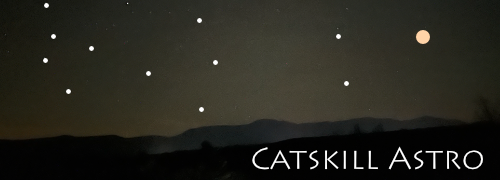Arp’s Peculiar Galaxies
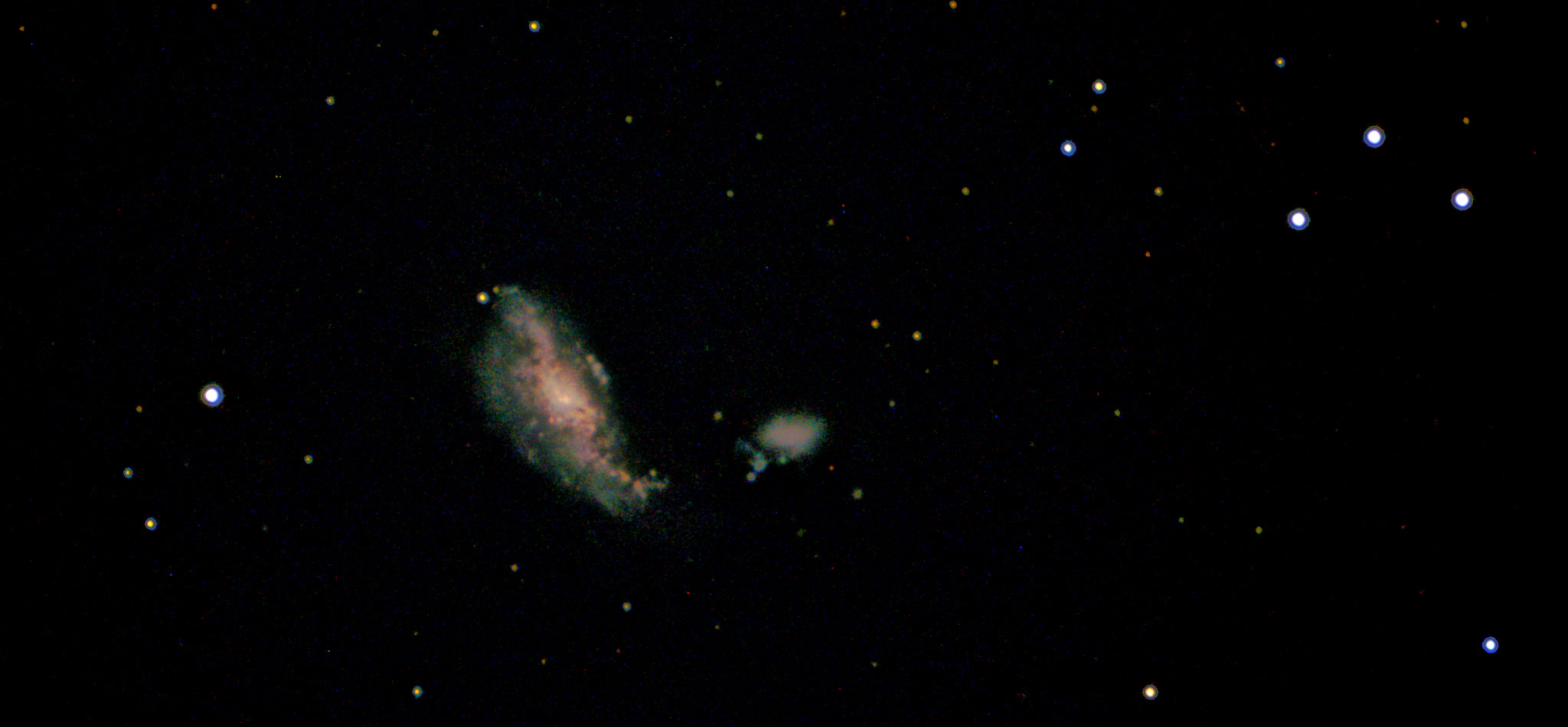
Page 6 of 16
Arp observations 51-60 of 155 total to date.
| Thumbnail | Title/link | Arp Category | Date Observed | Observer Description |
|---|---|---|---|---|
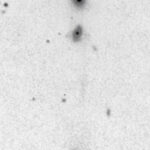 |
Arp 105 / NGC 3561 / Ambartsumians Knot | Elliptical galaxies connected to spiral galaxies | 2025-03-18 22:20:00 | This is a fabulous pair of interacting galaxies. Ambartsumian's Knot is the little dot right at the top ot the comparison images that is though to be the remnant of the extensive tidal tail pulled out of one of the galaxies. First observation of the night using the new 2500mc in Bin2. |
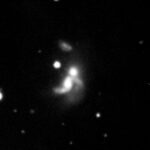 |
Arp 111 / NGC 5421 | Elliptical galaxies repelling spiral arms | 2025-07-27 23:01:00 | The night cleared just after sunset, and shortly after a brief rain shower. We struggled with ground mist all evening, and patchy clouds. |
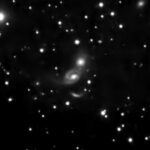 |
Arp 112 / NGC 7805, 7806 and KUG 2359+311 | Elliptical galaxies repelling spiral arms | 2024-10-28 23:19:00 | A compact cluster of 3 galaxies, clearly interacting. The elliptical galaxy is NGC 7805, the largest spiral, is NGC 7806, and the small spiral in profile is KUG 2359+311. The two NGC galaxies are reasonably bright... the KUG has very low surface brightness which I can see nearly complete if I overstretch it and blow out the rest of the image. It is apparently a very strong UV emitter as it shows up on the KUG catalog, which is reserved for strong UV sources. It's unclear to me why the lower arm of NGC 7806 is so elongated. Arp categorizes it as "elliptical galaxies repelling spiral arms". Really? Seems to me that gravity attracts not repels. Remarks are blank for Arp 112, so no clues there. An alternative explanation might be that one of the other galaxies passed below from right to left before being captured and pulled back into the current orientation. The extended arm, therefore, might be a legacy of the "fly by". In any event, the two larger galaxies are close to each other and clearly exchanging matter. The KUG may be interacting with the spiral, judging from my inverted capture. |
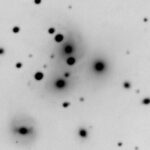 |
Arp 113 / NGC 70 and many more | Elliptical galaxies close to and perturbing spiral galaxies | 2025-07-24 00:23:00 | NGC 70 is the "spiral" that's being perturbed. It has a bright nucleus, but the structure is nearly invisible in my capture even after an hour. But look at the gorgeous spiral structure rendered by the Hale Telescope! It's really strutting its stuff on this capture: 200" aperture, f/3! They spent $100 million in current dollars and you can see in this image why it was worth every penny. |
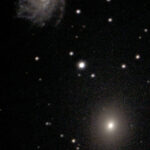 |
Arp 114 / NGC 2300 | Elliptical galaxies close to and perturbing spiral galaxies | 2024-04-15 21:30:00 | Arp 25 (upper left) was visible from the first light frame. Arp 114's center looked like a bright star at first and capturing the rest of its disc required most of the integration time of 40m. I presume Arp concluded the two galaxies were perturbing each other because "the one heavy arm" in Arp 25 stretches outward towards Arp 114. Indeed, after I concluded the last sentence, I checked Arp's remarks for 114: "Spiral somewhat pec., may be perturbed. See No. 25. " Peculiar indeed. |
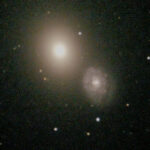 |
Arp 116 / M60 / NGC 4649-4647 | Elliptical galaxies close to and perturbing spiral galaxies | 2024-04-16 00:15:00 | This is the third of three entries posted by Messier on April 15, 1779, discovered while mapping the path of the Comet of 1779 through Virgo. Credit for the discovery is given to Johann Gottfried Koehler who observed it on April 11, 1779, four days earlier. Messier's entry: "Nebula in Virgo, a little more distinct than the two preceding [M58 and M59].... M. Messier reported it on the Chart of the Comet of 1779. He discovered these three nebulae while observing this Comet which passed very close to them. The latter passed so near on April 13 & 14 that the one & the other were both in the same field [of view] of the refractor, and he could not see it; it was not until the 15th, while looking for the Comet, that he perceived the nebula. These three nebulae don't appear to contain any star." Clearly, Messier saw only a single nebula, not two interacting ones. <--> In my image, NGC 4647 makes a lovely contrast with M60... a spiral galaxy with lots of structure vs. elliptical with virtually none other than a bright center. Certainly does appear that M60 is perturbing NGC 4647. Assuming NGC 4647 was close to circular when formed, the attraction has elongated its current shape and given the center of mass a slight kink to the south (towards M60). |
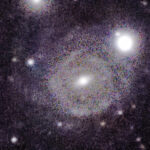 |
Arp 117 / IC 982-983 | Elliptical galaxies close to and perturbing spiral galaxies | 2024-06-01 00:12:00 | A fascinating pairing of a large, low-surface brightness, barred spiral galaxy (IC 983) interacting with (absorbing?) a smaller elliptical galaxy (IC 982) (upper left). Essentially the spiral arms of 983 are directly connected to 982, which can best be seen in the grayscale, inverted version of my capture, found second in the gallery. Also, note the large, upper right circle is a Milky Way star, easily ingerpreted as a double star in my color images. It's significant that a galaxy as large as 983 wasn't discovered in time to be published in the NGC catalog, no doubt because the low surface brightness galaxy could only be seen in photographic plates. All NGC objects were discovered visually. The IC catalog was an extension of NGC published in 1888 and 1905. IC objects were discovered both visually and with photo-plates. Anything discovered later was almost certainly discovered using photography. |
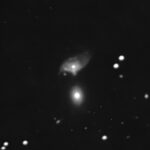 |
Arp 119 / UGC 849 / Mrk 984 | Elliptical galaxies close to and perturbing spiral galaxies | 2025-09-21 23:02:00 | Arp saw an Elliptical Galaxy perturbing a nearby Spiral. His notes say, cryptically, "Some material seems attracted, some repelled," which is a prescient comment, given more modern research. |
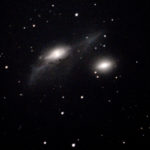 |
Arp 120 / Eyes Galaxies | Elliptical galaxies close to and perturbing spiral galaxies | 2024-03-13 12:11:14 | What a fun target! The two galaxy centers are bright and were evident from the first 30 second frame. So the two galaxies "close to each other" is obvious, but it takes a while for the "perterbation" to become obvious, and best viewed in the inverted image. The extensive dust clouds connecting these galaxies are much lower brightness and took a while to become evident. Luckily it was a clear, dark night and I was able to continue integration until I judged minimal additional detail was forthcoming, after about half an hour. Very peculiar! |
 |
Arp 122 / NGC 6040 | Elliptical galaxies connected to spiral galaxies | 2025-07-02 23:55:00 | Two more Arps in the Hercules cluster, these two spiral galaxies distorting each other as they merge. |
